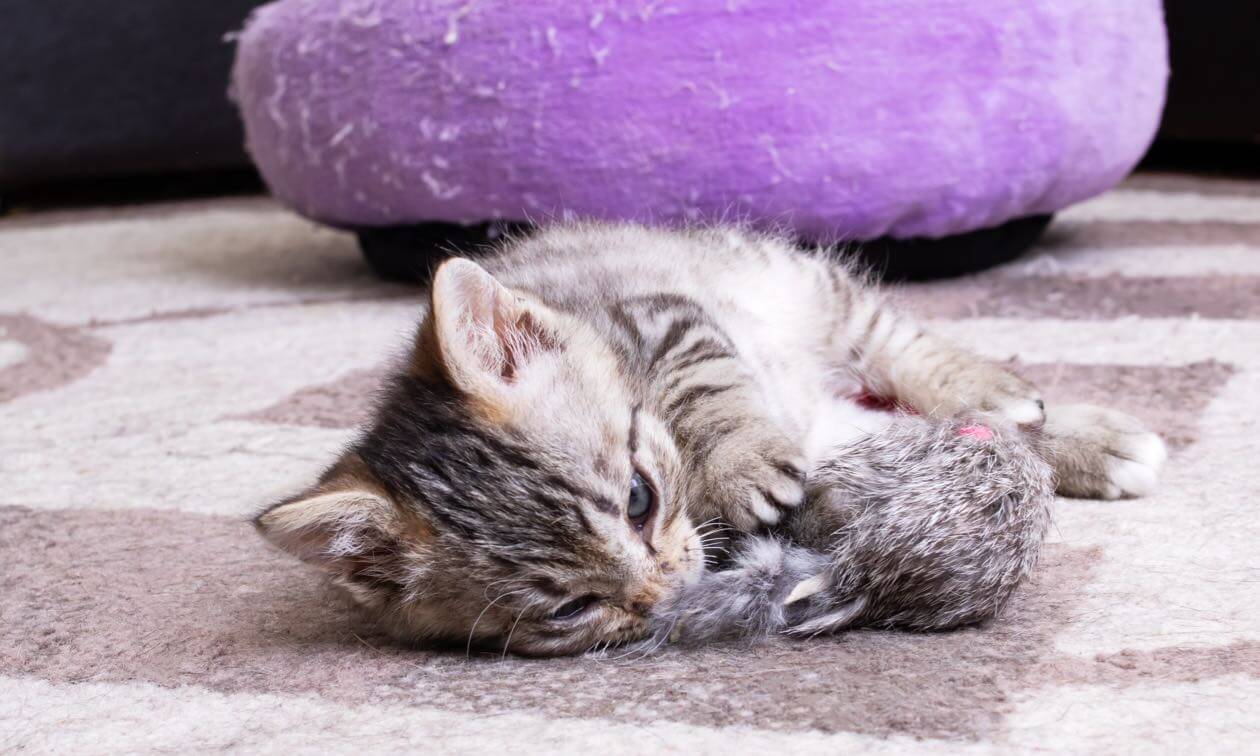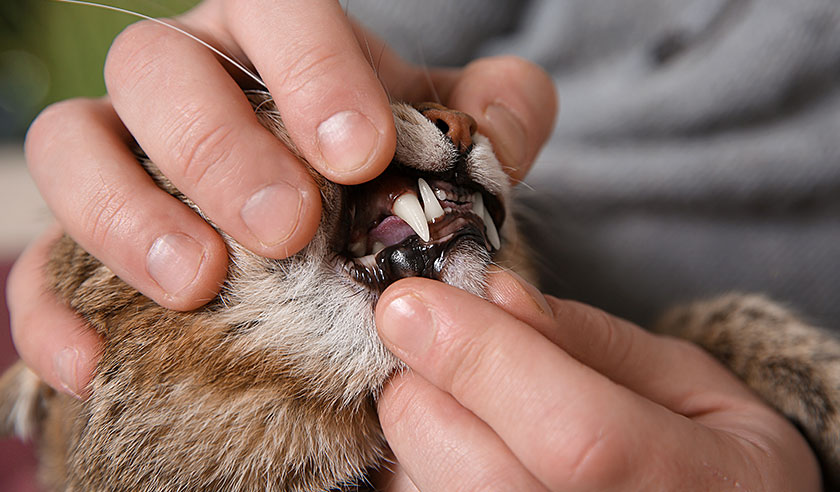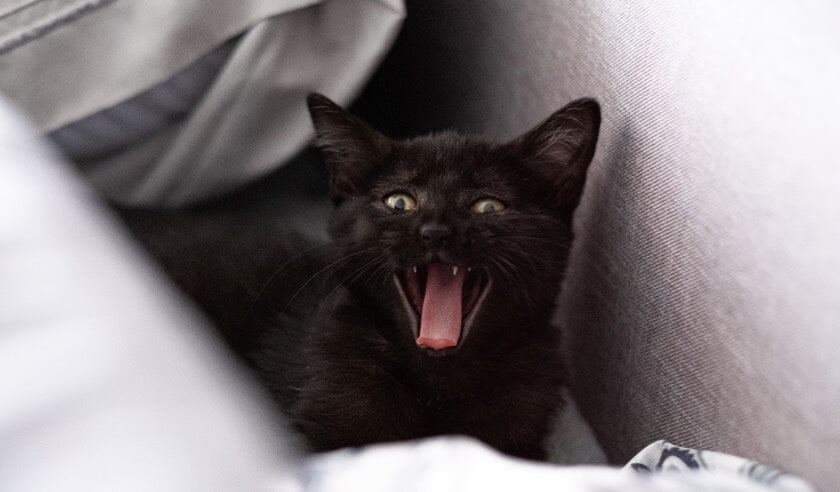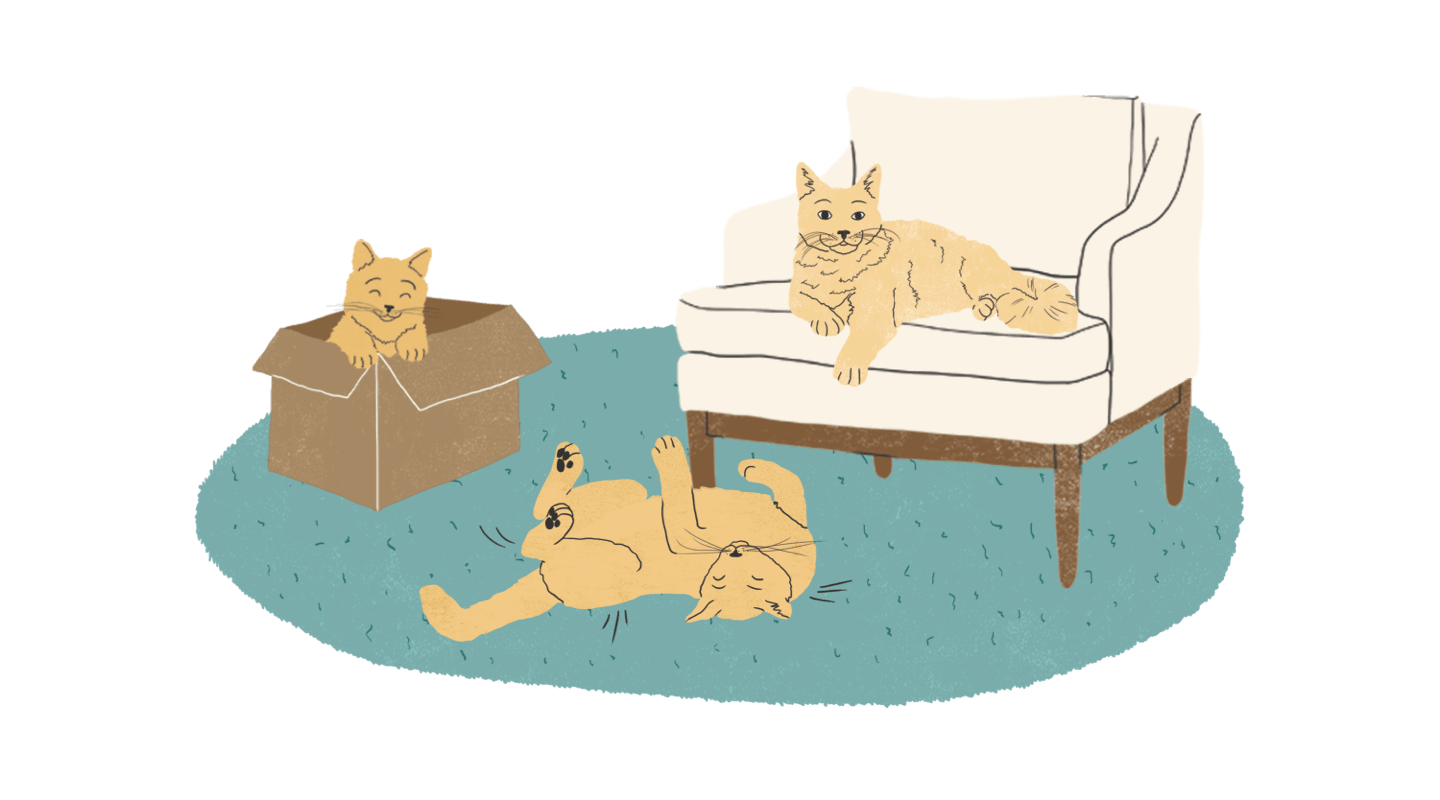One of the often-overlooked kitten needs is providing comfort during teething. Yes, kittens teethe just like babies! Knowing the ins and outs of kitten teething can help you understand what they’re going through and offer a little support.
What Age Does Kitten Teething Start?[1]
Kittens go through two teething phases. At birth, they have no teeth — something the momma cat is likely grateful for. Their first set of 26 teeth are the baby teeth (or deciduous, primary, or milk teeth). They begin erupting around 3 weeks of age and are usually all in around 6 to 8 weeks of age.
The second teething phase, where the permanent adult teeth erupt, starts around 3 to 4 months of age. This process only lasts about 2 to 3 months. The first teeth your kitten replaces are the incisors or front teeth, followed by the canine teeth. The last permanent teeth to erupt are the premolars and molars. The end result is 30 pearly white permanent adult teeth.
Does Kitten Teething Hurt?
Teething isn’t painful for the most part — but just like people handle pain and discomfort differently, so can kittens. If your kitten seems to be in pain, especially if you notice significant changes in their eating habits or personality, it’s important to consult with your veterinarian.
Signs Your Kitten Is Teething
Most of the time, cat owners don’t know that their kitten is teething. But there can be signs:
- Drooling
Typically, it’s a bit more than normal happy kitty drool. - Changes in Eating Habits
They may be reluctant to eat, chew differently, prefer only soft food, etc. If your kitten loses weight or won’t eat for more than 24 hours, contact your veterinarian immediately. Kittens can quickly go from a healthy state to an emergency situation without food and hydration. - Bad Breath
When the gums become inflamed (gingivitis) from the teeth erupting, it can result in bad breath. - Missing Teeth
Don’t be surprised if your kitten swallows their baby teeth or if you find a few on the floor. - Excessive Chewing
Fortunately, they don’t have the same aggressive chewing needs as teething puppies. Still, for some, it eases the pressure from the erupting teeth. - Shaking Their Head or Pawing at Their Muzzle
They may have a loose tooth hanging onto the gum and are trying to get it out. - Mild Gum Bleeding
You may notice some blood around their mouth, on their paws, or on toys. - Change in Personality
Some kittens may get grumpy due to the mild discomfort. - Avoiding Facial Contact
Some kittens may not want their faces touched. - Changes in Grooming Activity
Grooming may irritate already sensitive gums.
How to Help Your Kitten During Teething
While teething isn’t generally anything to be concerned about, giving your kitten a little extra support to get through it is beneficial. Here are some things you can do for your kitten:
- Play More Gently
Grabbing or tugging a toy that is in their mouth may cause pain. - Pet More Gently
Avoid petting or rubbing their mouth and face. - Put Safety Measures in Place
Your kitten may have an excessive desire to chew things they normally would leave alone, such as electric cords and hard items like plastic or wood. If you can, remove anything they show an interest in chewing that they shouldn’t. Be sure to protect cords and wires. You can put double-sided pet tape on items that can’t be removed to make them less attractive for chewing. - Provide Appropriate Toys
Be sure to give them toys that won’t damage their teeth or hurt their gums — nothing too hard. A cold, wet washcloth often works great. Nylon toys can be placed in a freezer before play to help soothe sore gums. - Hold Off on Brushing Teeth
If you’re already practicing brushing your kitten’s teeth, take a short break during teething, so they don’t associate pain with brushing. - Give Soft Food
Either soften their dry food with warm water or feed them canned food — but don’t suddenly change their food from dry to wet. Changes should be made gradually over a few days. - Give Soft Treats
Use soft and chewy treats instead of hard treats. - Help Them Relax
Provide calming pheromones and/or natural calming treats if approved by your veterinarian. - Don't Pull on a Loose Tooth
If you notice a tooth ready to fall out, even if it’s just barely hanging on, leave it alone. Let nature take its course. Pulling on the tooth could damage the gum, cause the tooth to break, and be painful.
Once you think your kitten is through their teething window, have your veterinarian give them a good oral exam. They’ll check that none of the teeth are too close together or in the wrong position. They’ll also make sure all the teeth have erupted, and there are no retained deciduous teeth.
After your kitten’s veterinarian gives the green light, be sure to establish a good dental hygiene routine to keep those new teeth clean and healthy.
ZPC-02267
- Tooth eruption and exfoliation in dogs and cats. DVM360. https://www.dvm360.com/view/tooth-eruption-and-exfoliation-dogs-and-cats. Accessed October 13, 2022





